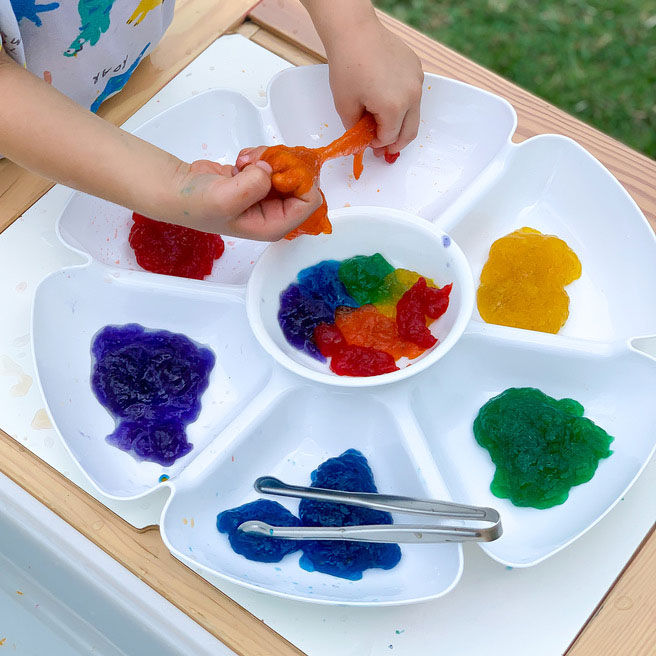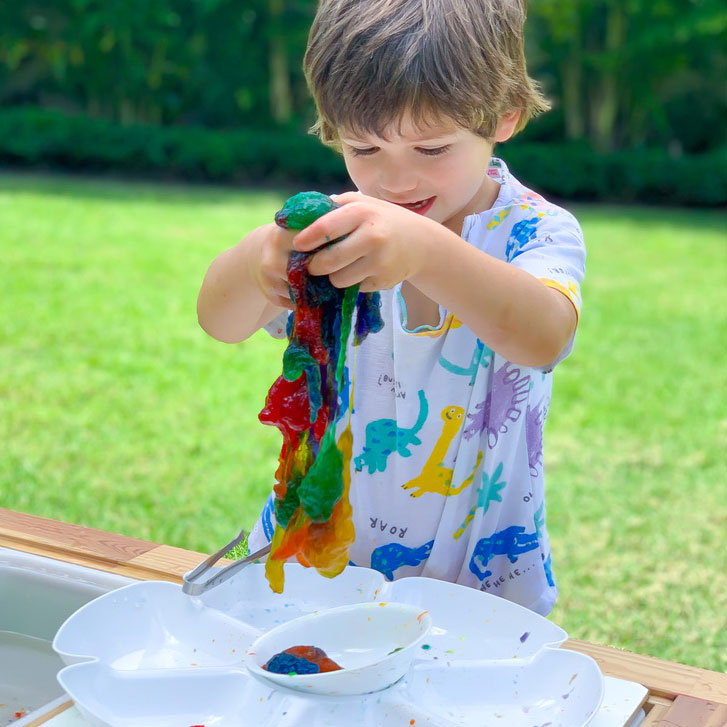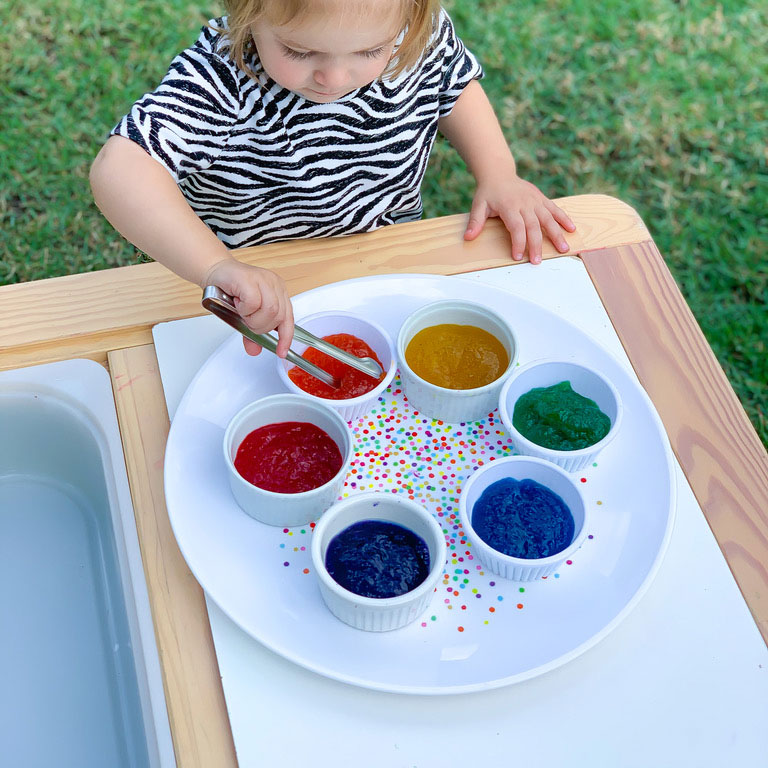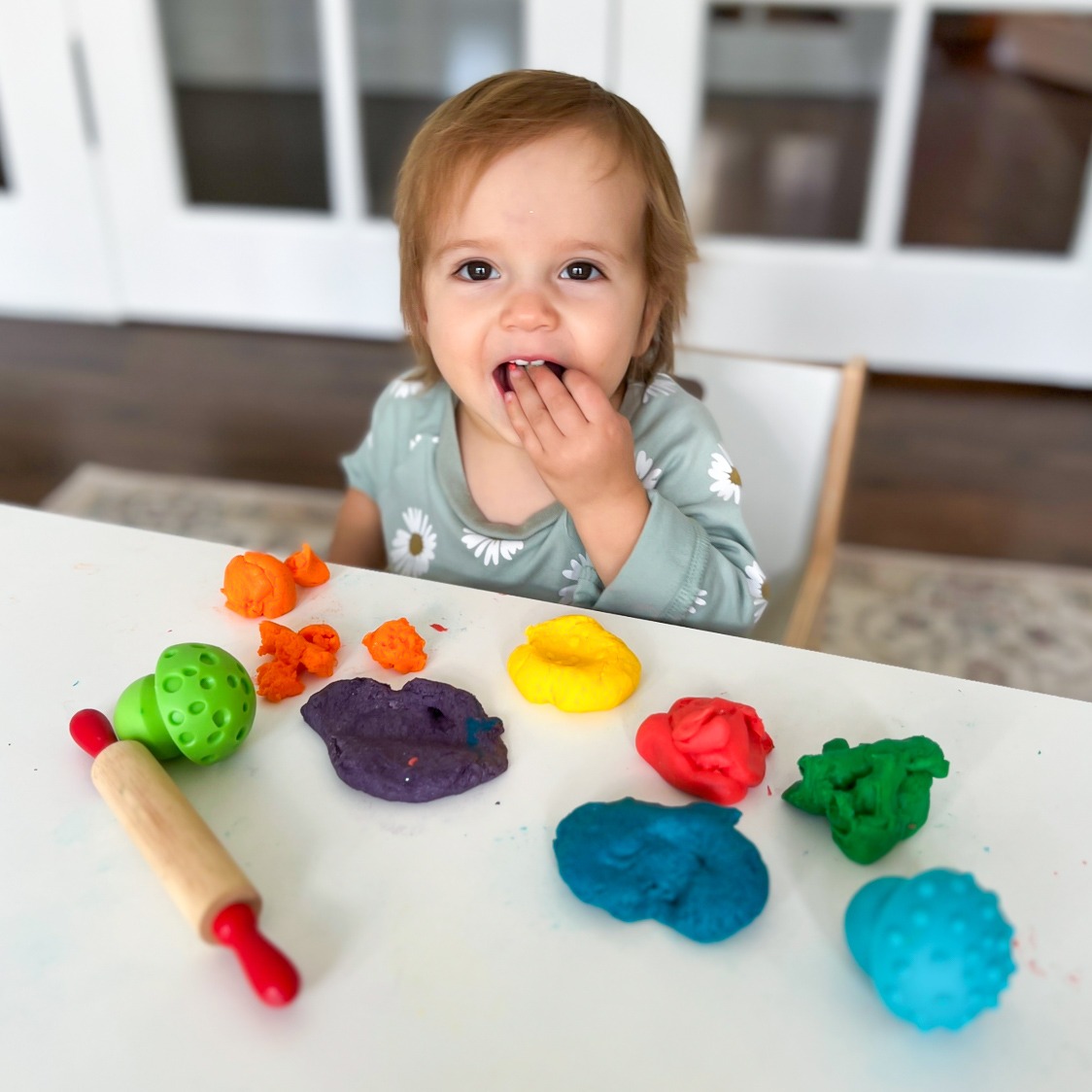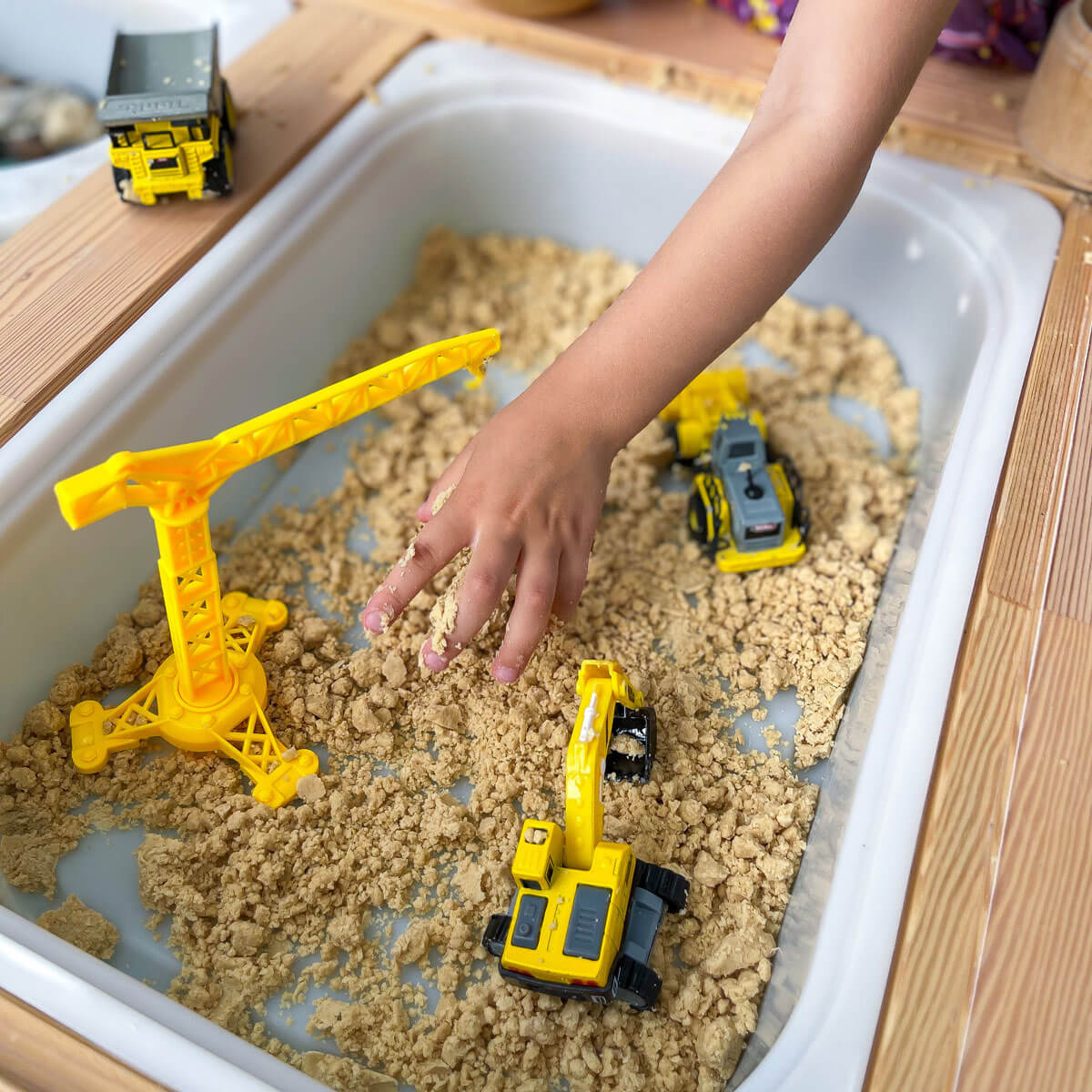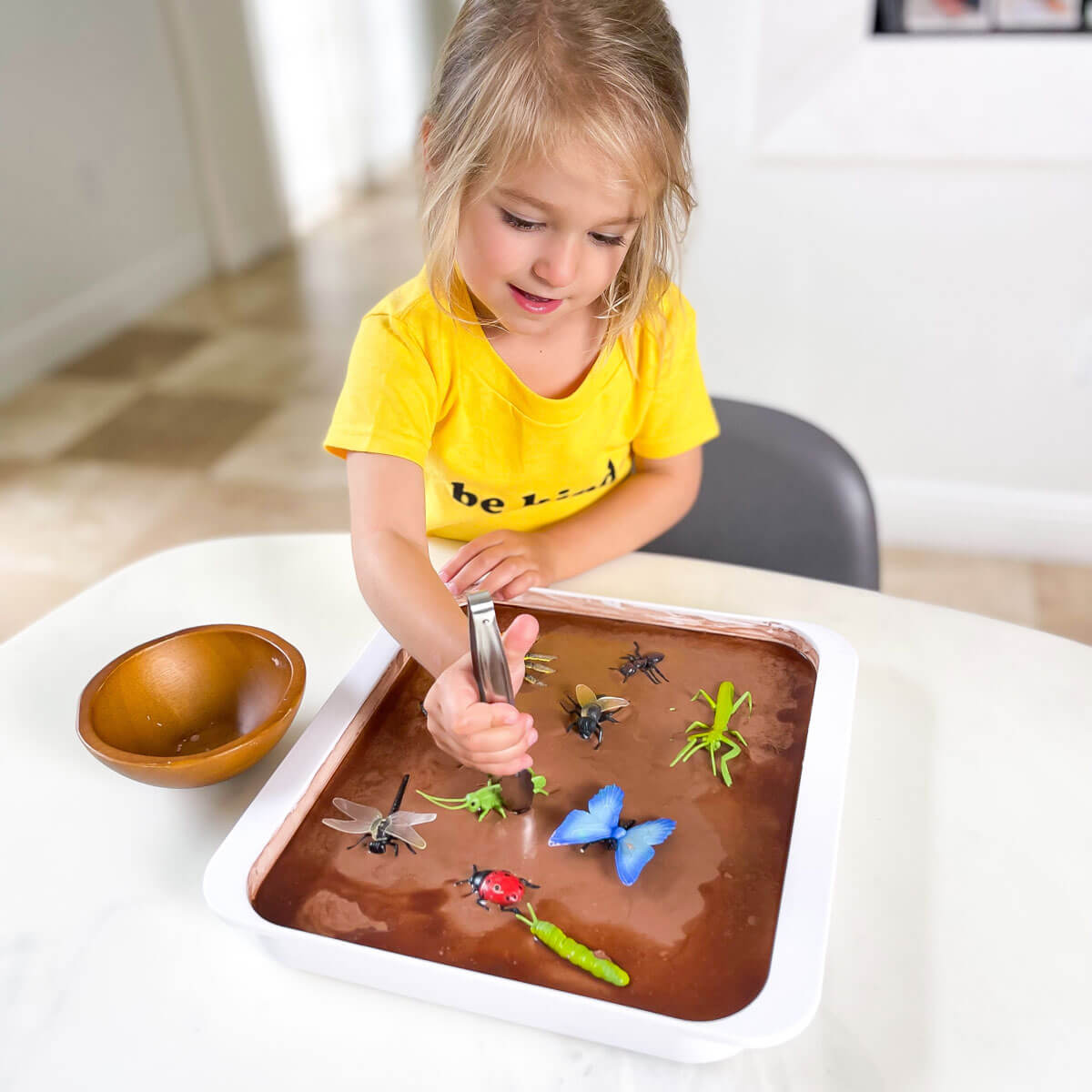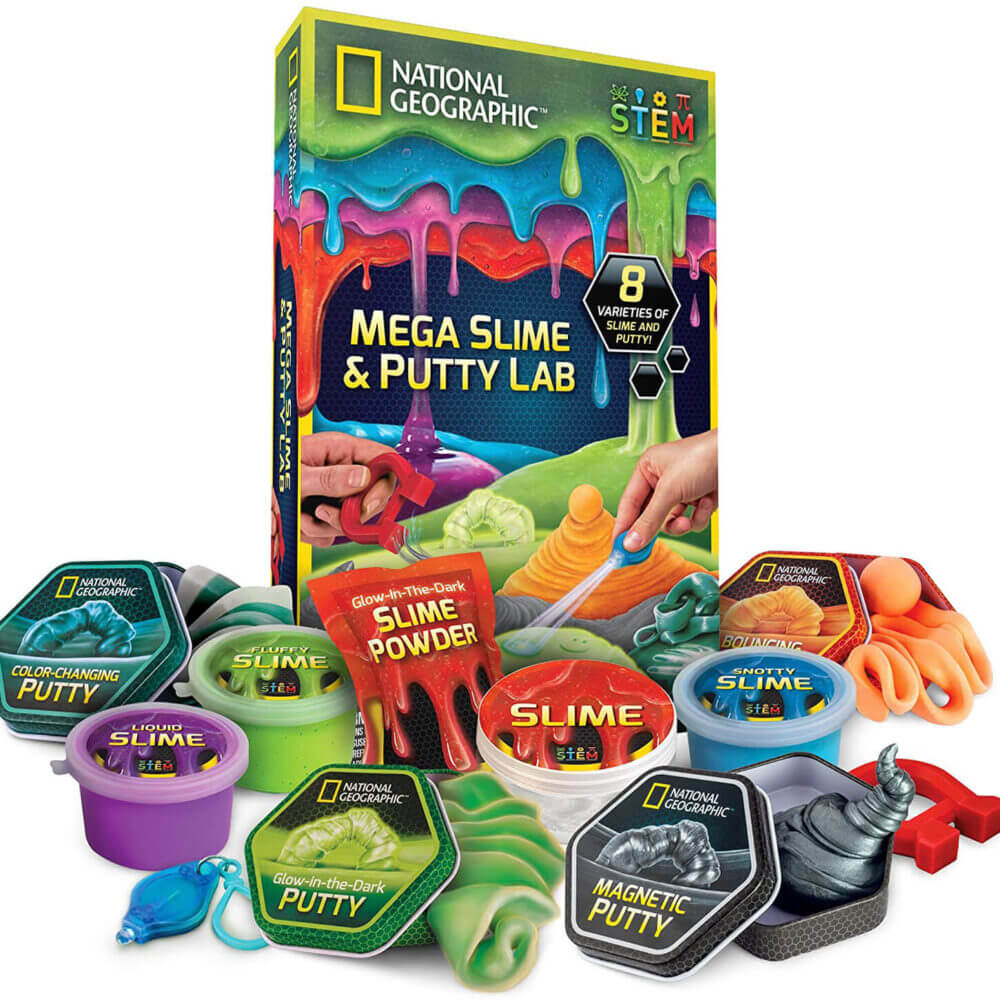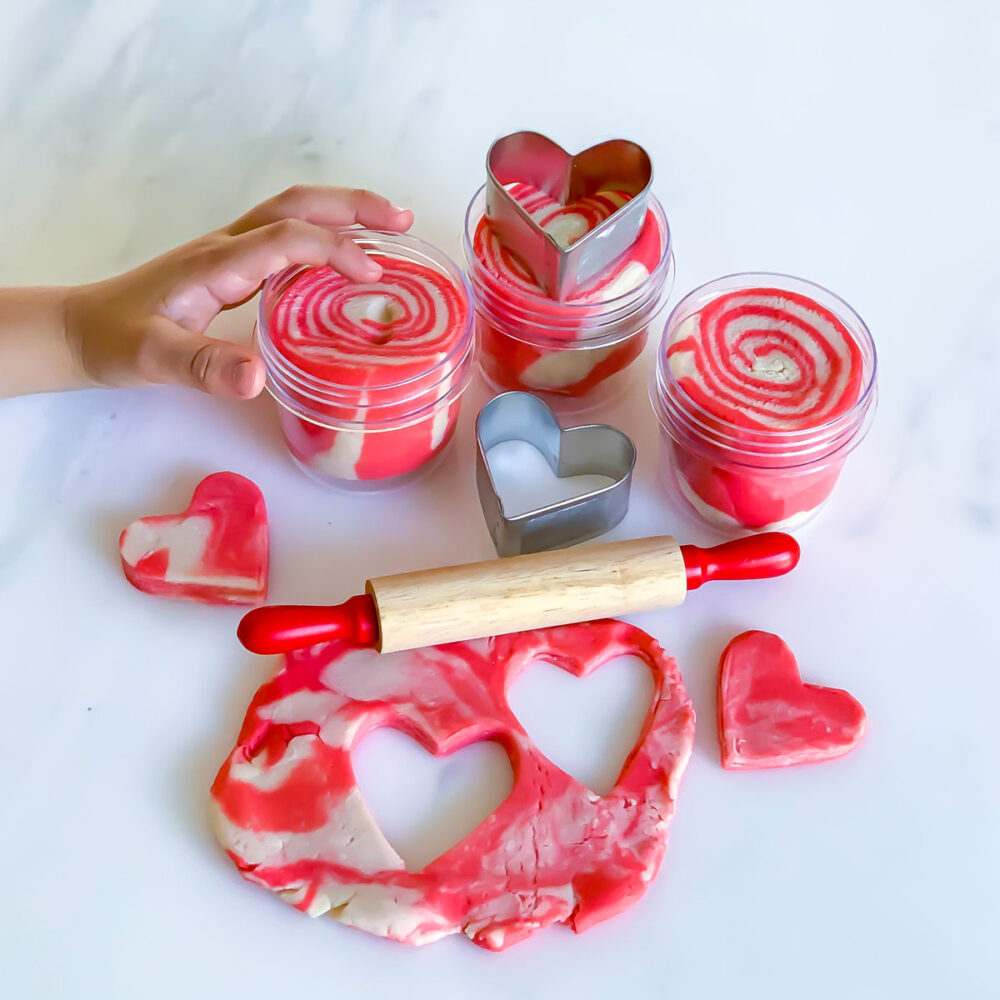Slime for Toddlers – How to Make Taste Safe Slime
Discover a safe and fun slime for toddlers. Read to get the recipe – it’s perfect for exploring textures without harmful chemicals!
Safe and Easy-to-Make Slime for Toddlers
Creating slime for toddlers has never been easier or safer! This simple recipe uses psyllium husk, a natural ingredient that gives the slime its perfect, slimy texture.
Sensory play is crucial for children’s development, enhancing their fine motor skills, creativity, and cognitive growth. With this non-toxic, taste-safe slime, parents can rest easy knowing their kids are playing with a chemical-free, safe substance. It’s a win-win-win for everyone involved!
All activities should be supervised by an adult. As an Amazon Associate, I earn from qualifying purchases. This post may contain affiliate links.
Skills: Sensory Play
Ages: 12 Months +
Prep Time: 10 minutes
The Evolution of Slime
Slime has been a popular children’s toy since the 1970s when it was first introduced by Mattel. Originally made from guar gum, the fascination with its gooey, stretchy properties quickly caught on. Over the years, commercial slimes have included various additives and chemicals to enhance their texture and color. However, concerns about the safety of these ingredients, especially for young children, have led to a rise in DIY slime recipes. By using natural ingredients like psyllium husk, parents can now create a safe, non-toxic version of this beloved toy, ensuring toddlers can enjoy the sensory benefits of slime without exposure to harmful substances.
Use Natural Food Dyes When Possible
Opting for natural food dyes instead of artificial ones when making slime is a healthier choice for toddlers. Natural dyes, derived from fruits, vegetables, and spices, eliminate the risk of exposure to harmful chemicals and potential allergens found in synthetic colors. They also offer a fun way to introduce kids to the vibrant hues of nature, making the slime not only safe but also an educational tool for learning about natural sources of color. By using natural food dyes, parents can ensure that their children’s sensory play is both safe and enriching.
The Evolution of Slime
Slime has been a popular children’s toy since the 1970s when it was first introduced by Mattel. Originally made from guar gum, the fascination with its gooey, stretchy properties quickly caught on. Over the years, commercial slimes have included various additives and chemicals to enhance their texture and color. However, concerns about the safety of these ingredients, especially for young children, have led to a rise in DIY slime recipes. By using natural ingredients like psyllium husk, parents can now create a safe, non-toxic version of this beloved toy, ensuring toddlers can enjoy the sensory benefits of slime without exposure to harmful substances.
Use Natural Food Dyes When Possible
Opting for natural food dyes instead of artificial ones when making slime is a healthier choice for toddlers. Natural dyes, derived from fruits, vegetables, and spices, eliminate the risk of exposure to harmful chemicals and potential allergens found in synthetic colors. They also offer a fun way to introduce kids to the vibrant hues of nature, making the slime not only safe but also an educational tool for learning about natural sources of color. By using natural food dyes, parents can ensure that their children’s sensory play is both safe and enriching.
What is Psyllium Husk and How Does It Work?
Psyllium husk is a natural fiber derived from the seeds of the Plantago ovata plant. Known for its high soluble fiber content, psyllium husk is often used as a dietary supplement to support digestive health. When mixed with water, psyllium husk forms a gel-like substance, giving it a slimy texture that makes it perfect for making slime for toddlers!
The texture of psyllium husk slime is similar to traditional slime—stretchy, squishy, and fun to play with. However, it has a unique, slightly grainy feel compared to the smooth consistency of commercial slimes. This difference is due to the fibrous nature of psyllium husk, which also makes it safer for sensory play.
While psyllium husk slime is taste-safe, meaning it’s not harmful if accidentally ingested, it is not meant to be eaten. The slime is non-toxic, but consuming large amounts of psyllium husk can lead to tummy issues. Therefore, it’s important not to encourage your child to eat the slime and to remind them it is only for play.
Materials
Step-by-Step Instructions
Step 1
Mix all three ingredients in a bowl in a big microwave-safe bowl.
Step 2
Microwave for 5 minutes, and be sure to let the mixture cool before handling!
Step 1
Mix all three ingredients in a bowl in a big microwave-safe bowl.
Step 2
Microwave for 5 minutes, and be sure to let the mixture cool before handling!
The Educational Benefits of Taste Safe Slime for Toddlers
Playing with taste-safe slime made from psyllium husk offers numerous educational benefits for toddlers. Engaging in slime play enhances fine motor skills as children squeeze, stretch, and manipulate the slime. This tactile activity also stimulates sensory development, helping kids learn about textures and viscosity through hands-on exploration. Additionally, playing with slime encourages creativity and imaginative play, as children can create shapes, patterns, and even stories with their slimy creations. Furthermore, such sensory play can improve focus and concentration, offering a calming, therapeutic experience. By using a safe, non-toxic slime recipe, parents can confidently support their children’s developmental growth through playful learning.
The Educational Benefits of Taste Safe Slime for Toddlers
Playing with taste-safe slime made from psyllium husk offers numerous educational benefits for toddlers. Engaging in slime play enhances fine motor skills as children squeeze, stretch, and manipulate the slime. This tactile activity also stimulates sensory development, helping kids learn about textures and viscosity through hands-on exploration. Additionally, playing with slime encourages creativity and imaginative play, as children can create shapes, patterns, and even stories with their slimy creations. Furthermore, such sensory play can improve focus and concentration, offering a calming, therapeutic experience. By using a safe, non-toxic slime recipe, parents can confidently support their children’s developmental growth through playful learning.
More Taste Safe Play Recipes to Explore
Don’t stop at this slime for toddlers recipe. Explore more ways your toddler can play safely with sensory bases!
12 Edible Play Dough Recipes
Taste Safe Sand
Taste Safe Foam
Taste Safe Mud
More Sensory Bases to Explore
Here are my top picks for different types of sensory bases.
Sensory Sand
Sensory sand is moldable! This bulk pack comes with enough to fill an entire bin for lasting fun! Bonus points for including a storage bin!
Modelling Dough
This modelling dough compound NEVER dries out! It is a fun texture – it is stretchy like play dough, moldable like kinetic sand, and odorless.
Premium Play Dough
This play dough is the cream of the crop! It is ridiculously silky and smooth, lasts for 6 months, and is scented!
What’s Next?
Breastmilk Keepsake – How to Use These DIY Kits
Searching for a simple (and fun) DIY Valentine’s Day card for your child to bring to school? This personalized card is so easy to make!
Scented Play Dough – How to Make Rose Swirls
This rose scented play dough recipe smells divine! It is a fun activity to do around Valentine’s Day and also make great gifts!
DIY Charm Bracelet with Free Printable and Hot Glue Hack
Create a DIY charm bracelet using our free printable and hot glue for unique designs. You won’t believe how great they look!

